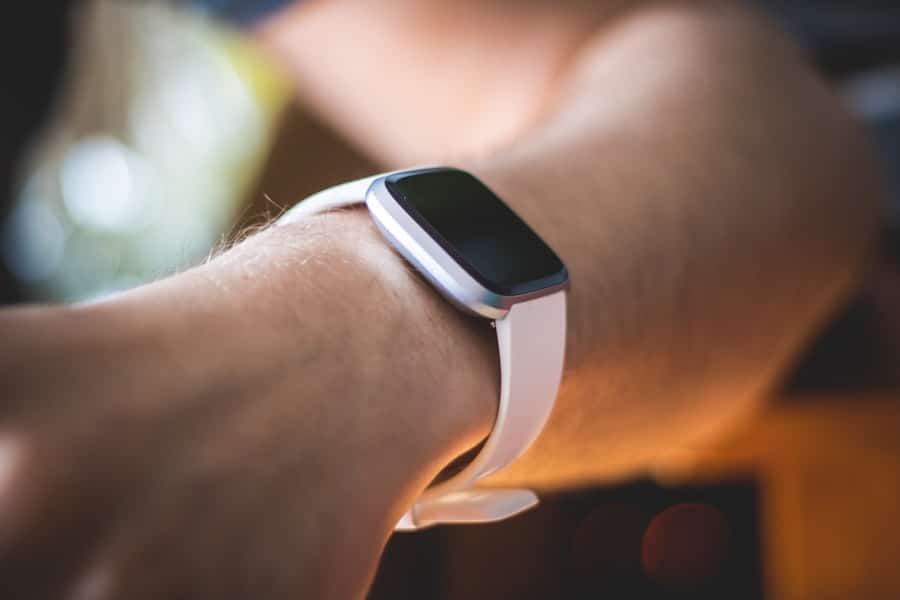In recent years, the integration of technology into the workplace has transformed various aspects of business operations, and one of the most significant advancements has been the rise of smart wearables. These devices, which include fitness trackers, smartwatches, and health-monitoring gadgets, have become increasingly popular in employee wellness programs. Smart wearables are designed to collect data on physical activity, heart rate, sleep patterns, and other health metrics, providing both employees and employers with valuable insights into health and wellness.
As organizations strive to enhance employee well-being and productivity, the adoption of smart wearables has emerged as a strategic initiative that aligns with broader health goals. The appeal of smart wearables lies not only in their ability to monitor health metrics but also in their potential to foster a culture of wellness within the workplace. By encouraging employees to take an active role in their health management, these devices can lead to improved morale, reduced absenteeism, and enhanced overall job satisfaction.
As companies recognize the importance of investing in employee wellness, smart wearables have become a key component of comprehensive wellness strategies. This article delves into the myriad benefits of smart wearables, how they function in tracking health metrics, their integration into wellness programs, the challenges faced during implementation, and future trends that may shape their role in employee wellness.
Key Takeaways
- Smart wearables are becoming increasingly popular in employee wellness programs as they offer a convenient and effective way to track and monitor health and fitness.
- The benefits of smart wearables for employee wellness include increased employee engagement, improved health outcomes, and potential cost savings for employers.
- Smart wearables track and monitor employee health through features such as heart rate monitoring, activity tracking, sleep monitoring, and stress management.
- Integrating smart wearables into employee wellness programs requires careful planning, clear communication, and consideration of privacy and data security concerns.
- Challenges for implementing smart wearables in employee wellness programs include ensuring employee buy-in, addressing privacy concerns, and managing the influx of data.
Benefits of Smart Wearables for Employee Wellness
Promoting Physical Activity
Many smart wearables come equipped with features that encourage users to move more throughout the day, such as step counters, reminders to stand up, and activity challenges. These features can motivate employees to adopt healthier lifestyles by making them more aware of their daily activity levels. For instance, a company might implement a step challenge where employees compete to achieve the highest number of steps over a month, fostering camaraderie while promoting fitness.
Personalized Health Insights
Smart wearables can facilitate personalized health insights that empower employees to make informed decisions about their well-being. By tracking metrics such as heart rate variability, sleep quality, and calorie expenditure, these devices provide users with tailored feedback that can help them identify areas for improvement. For example, an employee who consistently receives alerts about insufficient sleep may be encouraged to prioritize rest, leading to better focus and productivity at work.
Data-Driven Wellness Initiatives
Additionally, organizations can leverage aggregated data from wearables to identify trends in employee health and wellness, allowing them to tailor programs and resources to meet the specific needs of their workforce.
How Smart Wearables Track and Monitor Employee Health
Smart wearables utilize a variety of sensors and technologies to track and monitor employee health effectively. Most commonly, these devices are equipped with accelerometers that measure movement and activity levels. By analyzing this data, wearables can determine whether an individual is walking, running, or engaging in other forms of exercise.
Furthermore, many devices include heart rate monitors that provide real-time feedback on cardiovascular performance during physical activities. This information is crucial for employees looking to optimize their workouts or manage stress levels throughout the day. In addition to physical activity tracking, smart wearables often feature sleep monitoring capabilities.
By analyzing sleep patterns—such as duration, quality, and stages of sleep—these devices can offer insights into how well an employee is resting. Poor sleep quality is linked to various health issues, including decreased cognitive function and increased risk of chronic diseases. By providing employees with data on their sleep habits, smart wearables can encourage them to adopt better sleep hygiene practices.
Some advanced models even offer guided breathing exercises or relaxation techniques to help users unwind before bedtime.
Integrating Smart Wearables into Employee Wellness Programs
Integrating smart wearables into employee wellness programs requires a strategic approach that considers both technological and human factors.
This may involve conducting surveys or focus groups to gather input from employees about what features they find most appealing or beneficial.
Once the appropriate devices are chosen, companies can develop a comprehensive rollout plan that includes training sessions on how to use the wearables effectively. Moreover, successful integration involves creating a supportive environment that encourages employees to engage with their devices actively. This can be achieved through gamification elements such as leaderboards or rewards for achieving specific health milestones.
For instance, companies might offer incentives like gift cards or extra vacation days for employees who reach certain fitness goals tracked by their wearables. Additionally, regular check-ins or wellness workshops can help maintain enthusiasm for using the devices while fostering a sense of community among participants.
Challenges and Considerations for Implementing Smart Wearables
While the benefits of smart wearables are compelling, organizations must also navigate several challenges when implementing these technologies in employee wellness programs. One significant concern is data privacy and security. As wearables collect sensitive health information, companies must ensure that they comply with regulations such as the Health Insurance Portability and Accountability Act (HIPAA) in the United States.
Employees may be hesitant to participate if they feel their personal data is at risk or if they lack clarity on how their information will be used. Another challenge is ensuring employee engagement over time. Initial enthusiasm for using smart wearables may wane as employees become accustomed to the technology or if they do not see immediate results from their efforts.
To combat this issue, organizations should focus on continuous communication and support. Regularly sharing success stories from employees who have benefited from using wearables can help maintain motivation and interest in the program. Additionally, providing ongoing education about the importance of health metrics tracked by wearables can reinforce their value in promoting overall well-being.
Case Studies of Successful Implementation of Smart Wearables in Employee Wellness Programs
The Power of Smart Wearables in Employee Wellness Programs
Smart wearables have been successfully integrated into employee wellness programs, demonstrating their potential to improve workforce health. One notable example is a wellness initiative implemented by a large tech company, which distributed fitness trackers to all employees.
### Encouraging Physical Activity
The program featured monthly challenges that encouraged teams to compete against one another in various physical activities. As a result, participation rates soared, leading to a noticeable increase in overall physical activity levels among employees. The company reported a significant reduction in healthcare costs associated with lifestyle-related illnesses over time.
### Supporting Mental Health
Another notable case is that of a multinational corporation that utilized smartwatches as part of its mental health initiative. Employees were encouraged to use mindfulness apps available on their devices for guided meditation sessions throughout the workday. The organization also provided workshops on stress management techniques that complemented the use of these wearables. Feedback from participants indicated improved mental well-being and reduced stress levels, showcasing how technology can enhance not only physical health but also mental resilience in the workplace.
Future Trends and Developments in Smart Wearables for Employee Wellness
As technology continues to evolve rapidly, the future of smart wearables in employee wellness programs looks promising. One emerging trend is the integration of artificial intelligence (AI) into wearable devices. AI algorithms can analyze vast amounts of health data collected from users to provide personalized recommendations tailored to individual needs and preferences.
For instance, an AI-powered wearable might suggest specific workouts based on an employee’s fitness level or alert them when it detects irregular heart patterns that warrant medical attention. Additionally, advancements in biometric sensors are likely to enhance the capabilities of smart wearables further. Future devices may be able to monitor additional health metrics such as blood glucose levels or hydration status non-invasively.
This could provide employees with even more comprehensive insights into their health and enable proactive management of chronic conditions. As organizations increasingly recognize the importance of holistic well-being—encompassing physical, mental, and emotional health—smart wearables will play an integral role in shaping future employee wellness initiatives.
The Impact of Smart Wearables on Employee Wellness Programs
The integration of smart wearables into employee wellness programs represents a significant shift towards data-driven health management in the workplace. By providing real-time insights into physical activity levels, sleep quality, and other vital health metrics, these devices empower employees to take charge of their well-being while fostering a culture of health within organizations. The benefits extend beyond individual employees; companies that prioritize wellness through technology often experience improved productivity, reduced healthcare costs, and enhanced employee satisfaction.
As organizations continue to explore innovative ways to support their workforce’s health needs, smart wearables will undoubtedly remain at the forefront of this evolution. With ongoing advancements in technology and an increasing focus on holistic well-being, the future holds exciting possibilities for how these devices will shape employee wellness programs across various industries.
In a recent article on com/best-software-to-create-training-videos/’>the best software to create training videos, the importance of utilizing technology to enhance employee learning and development is highlighted.
This ties in with the discussion on smart wearables in improving employee wellness programs, as both topics emphasize the role of innovative tools in supporting employee growth and well-being. By incorporating smart wearables and training videos into workplace initiatives, companies can create a more holistic approach to employee wellness and professional development. Additionally, the article on smartwatches Xiaomi review provides insights into the latest wearable technology that can further enhance employee wellness programs.
FAQs
What are smart wearables?
Smart wearables are electronic devices that can be worn as accessories or clothing items and are equipped with sensors and software that enable them to collect and transmit data about the wearer’s activities, health, and fitness.
How do smart wearables improve employee wellness programs?
Smart wearables can track employees’ physical activity, sleep patterns, and other health metrics, providing valuable data that can be used to design and tailor wellness programs to individual needs. This data can also be used to motivate employees to adopt healthier habits and lifestyles.
What are the benefits of using smart wearables in employee wellness programs?
Some benefits of using smart wearables in employee wellness programs include increased employee engagement, improved health outcomes, reduced healthcare costs, and a better understanding of the overall health and wellness of the workforce.
What types of data can smart wearables collect?
Smart wearables can collect a wide range of data, including steps taken, distance traveled, calories burned, heart rate, sleep patterns, and even stress levels. This data can provide valuable insights into employees’ overall health and wellness.
Are there any privacy concerns associated with using smart wearables in employee wellness programs?
Yes, there are potential privacy concerns related to the collection and use of personal health data from smart wearables. Employers must ensure that they have clear policies in place to protect employees’ privacy and comply with relevant data protection regulations.



